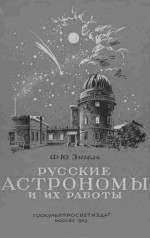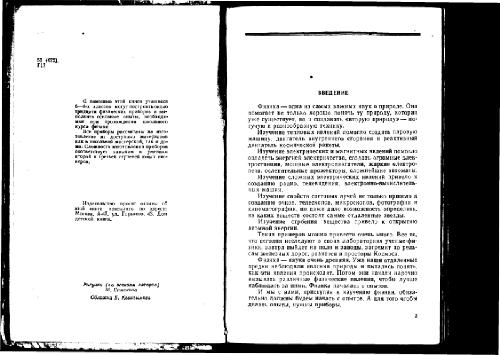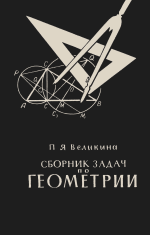- 2 402 202 книги
libcats.org








Numerical Investigation of Turbulent Nonpremixed Methane-air Flames
Demiraydin L.Turbulent combustion is an important phenomenon in industrial applications, such as gas turbines, diesel engines, low NOx burners, spark-ignition engines and furnaces. Improvements are often necessary, since the applications have to be effective, economical and clean. Therefore, a better understanding of the turbulent combustion is needed. Numerical simulations, so-called Computational Fluid Dynamics (CFD), help to optimize and improve the applications in reacting flows. In comparison with experimental studies, CFD is relatively cheap. Although a complete simulation of a turbulent reacting flow, which involves all physical phenomena is not possible at present, the solutions of CFD is able to facilitate the device-scale analysis and the design of many new industrial combustion applications. The study of turbulent combustion is important from a scientific point of view as from a practical point of view. The use of the numerical models for industrial applications are first handled with a continuous cycle of 'the understanding of fundamentals of combustion', 'model developments', 'implementation of models in numerical simulations', and 'validation of the numerical results with experimental measurements'. When validating the numerical models, simple flame configurations are required. This fact brings the importance of studying the turbulent jet flows numerically and experimentally.Turbulent combustion research can be classified into two categories: non-premixed combustion and premixed combustion. In general, different modeling approaches are required to deal with each combustion category. New generation low emission/low fuel consumption combustion systems are characterized by a combined concept of two combustion categories, which is called partially premixed turbulent combustion. For example, lean premixed combustion systems for reducing NOx emissions in gas turbine combustors and gasoline direct injection spark-ignition engines for reducing the fuel consumption operate in partially premixed conditions. This work deals with the modeling of nonpremixed and partially premixed turbulent combustion. The two common models of nonpremixed combustion are the probability density function (PDF) transport equation models and laminar flamelet models. These models have their own advantages and disadvantages. The PDF transport equation models have the important advantage that the chemical source term appears in closed form. Additionally, the statistical distributions of scalar variables are obtained by calculated probability distributions. The laminar flamelet models have the advantage of strong coupling between chemical reaction and molecular transport. The nonpremixed combustion is classified into different regimes, depending on the flame structure. In evaluating the regime of applicability, the PDF transport equation models and the laminar flamelet models are disjoint. Since the molecular transport term requires modeling in the PDF transport equation, the tight statistical correlation between chemical activity and molecular transport is not considered in the PDF transport equation models. This is a constraint for the model. Therefore, PDF transport equation models are valid only when the turbulent mixing will still be sufficiently intense to restrain the formation of coherent structures with correlated chemical kinetics. On the other hand, when the turbulence intensities decrease, the interaction between chemical reaction and molecular transport gains importance. This regime is called flamelet regime and the laminar flamelet models are valid for this regime. The most promising approach in this direction appears to be extending the PDF methods that would properly account for the coupling between reaction and molecular transport in the flamelet regime. Therefore, the present work was focused on a new concept, combining two common types of non-premixed combustion models: the Eulerian composition PDF transport equation models and transient laminar flamelet models. The new model - the coupled TLFM/PDF model- aims to combine the advantages of the both models, while avoiding their disadvantages. The compromise here is to solve the conserved scalar - the mixture fraction- with the PDF transport equation and avoid using presumed PDF shapes as in the laminar flamelet models. The scalar dissipation rate, reaction progress variable and the turbulent time scale are the other decisive parameters, which are calculated. Then, the thermochemical variables; such as temperature and mass fractions of species are read from the transient flamelet libraries. The flamelet libraries consider for the correlation of chemistry and molecular transport. The scalar dissipation rate determines the extinction and the reaction progress variable determines the partially premixed conditions.The first stage of the study was to improve the transient laminar flamelet model of Ferreira (ETH,Zürich) and validate the PDF transport equation model with a 4-step reduced mechanism. The studies are applied to piloted jet flames, which are the target flames of an international workshop. The velocity, mixture fraction, temperature and mass fraction of species are evaluated. The second stage was to validate the new model, -the coupled TLFM/PDF model- for the same test case and compare with the existing models, which are mentioned above. The capabilities of each model, their advantages and disadvantages are summarized. An additional study was the numerical study of an opposed jet flame with the PDF transport equation model.
Ссылка удалена правообладателем
----
The book removed at the request of the copyright holder.
----
The book removed at the request of the copyright holder.
Популярные книги за неделю:
#2

В.Бекетов, К.Харченко. Измерения и испытания при конструировании и регулировке радиолюбительских антенн (djvu)
4.82 Mb
#4

Самодельные детали для сельского радиоприемника
Авторы: З.Б.Гинзбург, Ф.И.Тарасов.Категория: радиоэлектроника
1.40 Mb
Только что пользователи скачали эти книги:
#2

Новые рассказы Рассеянного Магистра. (1969) . Математический детектив. Для младшего и среднего возраста.
Александрова Эмилия, Лёвшин Владимир, Рисунки В.Сергеева.Категория: Физико-математические науки: математика
1.86 Mb
#3

Русские астрономы и их работы. Материал для лекций
Зигель Феликс ЮрьевичКатегория: Физико-математические науки: астрономия
2.57 Mb
#4

Алгебра для 9 класса. Учебное пособие для учащихся школ и классов с углубленным изучением математики
Авторы: Н.Я.Виленкин, Г.С.Сурвилло, А.С.Симонов, А.И.Кудрявцев. Под редакцией Н.Я.Виленкина.Категория: Физико-математические науки: математика
9.51 Mb
#5

Лаборатория юного физика. Для восьмилетней школы
Авторы: Леонид Яковлевич Гальперштейн, Петр Петрович Хлебников. Рисунки (по эскизам авторов) М.Симакова.Категория: Физико-математические науки: механика, физика
2.88 Mb
#6

Сборник задач по геометрии для 6-8 классов. Пособие для учителей
Великина Полина ЯковлевнаКатегория: Физико-математические науки: математика
8.28 Mb
#7

ПТС-2. Плавающий гусеничный транспортер ПТС-2. Техническое описание и Инструкция по эксплуатации
Категория: Военная техника
8.09 Mb








